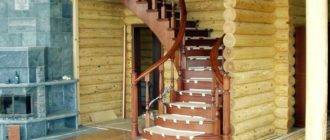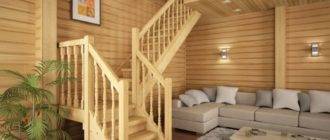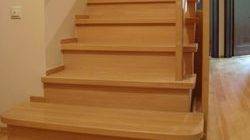The topic of this article is the repair of wooden stairs. We'll look at common problems with these designs and show you how to fix them. So, let's go.
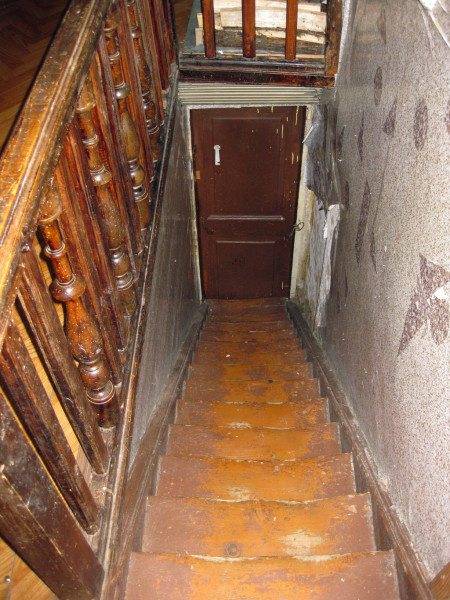
When repairs are needed
Let's be realistic: an old dilapidated staircase, the stringers or bowstrings of which are worn out by bugs or simply rotted, is useless to repair. In such cases, the only reasonable solution is to completely replace the entire structure.
However, a number of problems can be solved without drastic measures and little bloodshed. Still, the price of a ready-made elite staircase from an array of noble rocks starts from hundreds of thousands of rubles; not every owner of an old house can afford such significant costs.
What kind of defects can be eliminated by hand at low cost?
- Complete or partial damage to the varnish or paint layer.
- Scratches and chips on the surface of steps, balusters and handrails.
- Knocked off the corners of the steps.
- Broken or rotten steps.
- Creak.
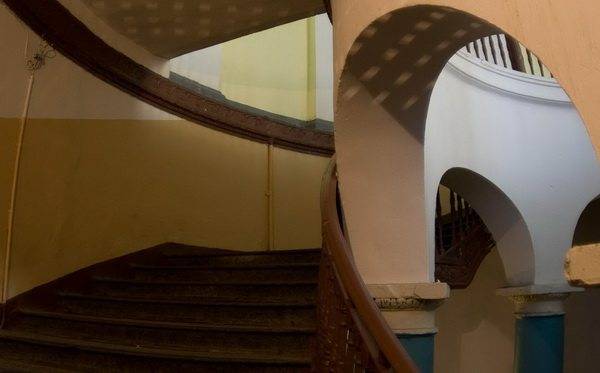
It is worth clarifying: if at least one step is rotten, it is worth carefully examining the load-bearing elements of the stairs. Wood of the same age, with the same processing and within the same structure rarely has a striking difference in condition.
Problems and solutions
What methods can be used to repair stairs in a house in each specific case?
Wear of paintwork
What to do if the finish coating of a wooden staircase has become unusable? Here's how to fully update it.
- If the steps are edged with a corner or a sill, remove it. It is possible that old screws will have to be drilled out.
- Armed with a blow dryer and a steel trowel, remove the base coat from the horizontal surfaces of the steps (tread). Almost all types of paints and varnishes when heated up to 150-250 degrees become plastic and easily removed from planes.
It is, of course, better to start by experimenting on a small area of the surface; in addition, you will have to work with the windows wide open: the heated coating will not smell like roses.
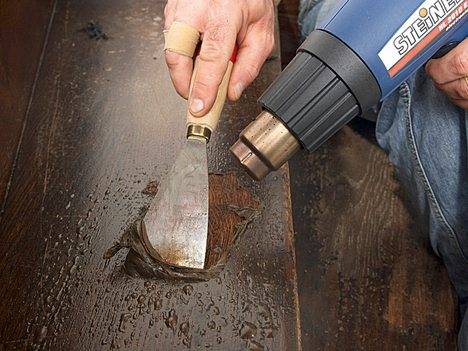
- Then comes the turn of the grinder. It is better to consistently use 40, 80 and 120 grit sandpaper: at the end you will get steps with a perfect surface. For our needs, an inexpensive vibration sander is quite suitable.
- The planes of the back side of steps, handrails and stringers can be processed with the same grinder - fine emery in one pass. Our task is to make their surface rough, to prepare them for re-varnishing or painting. Balusters, the space between them and all uneven surfaces are sanded by hand.
- Steps cleaned to wood are treated with chlorine-containing bleach (in the simplest form - the usual Whiteness); then - with antiseptic soil.
- The next stage after drying the soil is finishing coating on the prepared surface, simply speaking, painting a wooden staircase.
Several rules apply here:
- If the steps are cleaned by us to wood, then any type of coating can be used on them. Where the old varnish or paint is only superficial sanded, the basis of the new coating should be the same: for nitrocellulose varnish, NC is used, for alkyd enamel - alkyd enamel, etc.
- If the composition of the old coating is unknown, experiment on a small, inconspicuous area: after drying, the new coating should not bubble or flake off.
- After applying and drying the first layer on bare wood, sanding with zero paper is required. Varnish or paint will raise the pile, making the surface rough.
- You cannot paint and varnish wood in a dusty room: the settled dust will hopelessly spoil it.
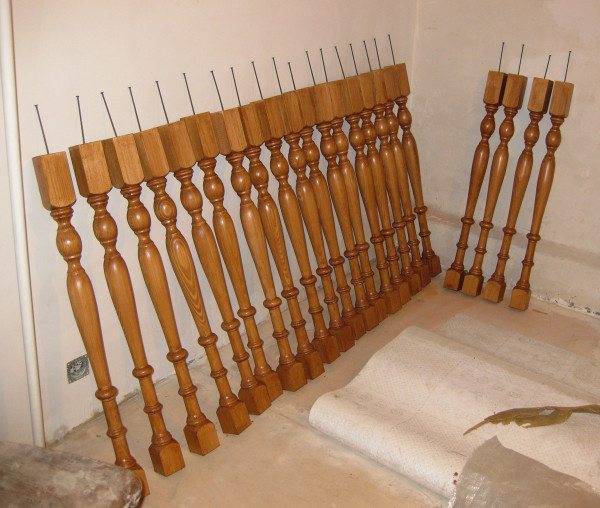
Deep scratches and chips on the surface of the steps
Two budget solutions are possible here:
- The surface is sanded to wood, putty and pasted over with veneer. 5-7 layers of polyurethane parquet varnish are applied on top: it will create an extremely durable protective layer. Of course, at least after applying the first layer, the surface is sanded with fine emery.
- A simpler repair of flights of stairs may consist in laying carpet on the tread. The edges of the cut-to-size mat are secured around the perimeter with a decorative aluminum frame.
Broken edges
What if the edges of a step are chipped or worn out after many years of use? The simplest solution is an edging with a decorative aluminum corner. On sale you can find an incredible number of its shapes and sizes; it will not be difficult to choose a product that is suitable for your case.
Tip: in case of severe wear, a cut-to-size sheet of thick (12-18 mm) plywood can be laid over the step. If necessary, the cavity under it is blown out with polyurethane foam (always with an overload during drying, otherwise the foam will lift the pad). The edge is again edged with an aluminum profile.
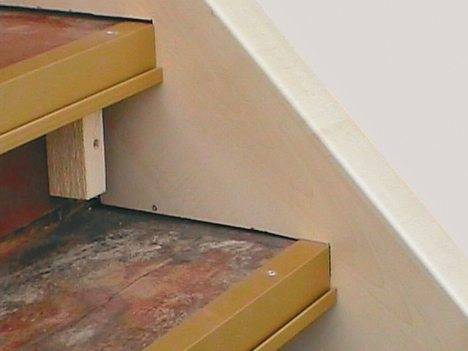
Damaged steps
If a step is split into several pieces or is hopelessly rotten, only replacing it will help. The method for a step cut into two bowstrings looks like this:
- The remains of the step are cut as close as possible to the bowstrings with an electric jigsaw or a hand hacksaw.
- The rest of the step is cut out of the groove with a chisel. If it is glued on, you can make horizontal cuts at the top and bottom of the groove.
- The new step will sit on any elastic wood glue.
Creak
If we exclude the obvious option with the complete disassembly of the ladder and reassembly with glue, there are few solutions left.
The simplest way to deal with squeak looks like this:
- Between the tread and what it rests on (the bottom of the groove of the bowstring or the riser), wedges are driven in. Without undue effort, of course: wood is easy to split.
- The gap is filled with acrylic sealant.
- After the sealant has set, the wedges are removed.
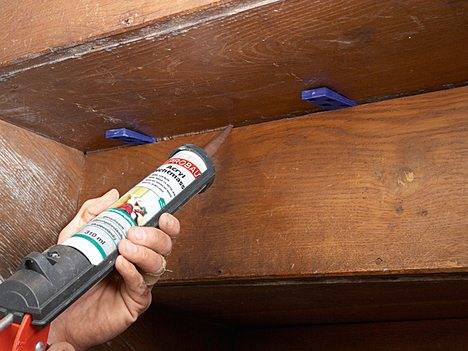
Useful little things
- In many of the Stalin era buildings of the 30s - 40s, staircases and steps were made of wood. Where there are at least some signs of dilapidation, the repair of stairwells should be accompanied by a complete replacement of the entire flooring. Ideally - on larch: it resists rotting better than other types of wood.
- Repair of external fire escapes, regardless of whether they are vertical or marching, is carried out only with steel and only with the use of welding. Repairing fire escapes using any combustible materials is an incredibly stupid undertaking that goes against the current fire safety rules.
- The safest, most effective and cheapest impregnation for protecting steps from moisture when restoring a wooden staircase - common drying oil... Its only serious drawback is the long (2-5 days) drying of each layer.
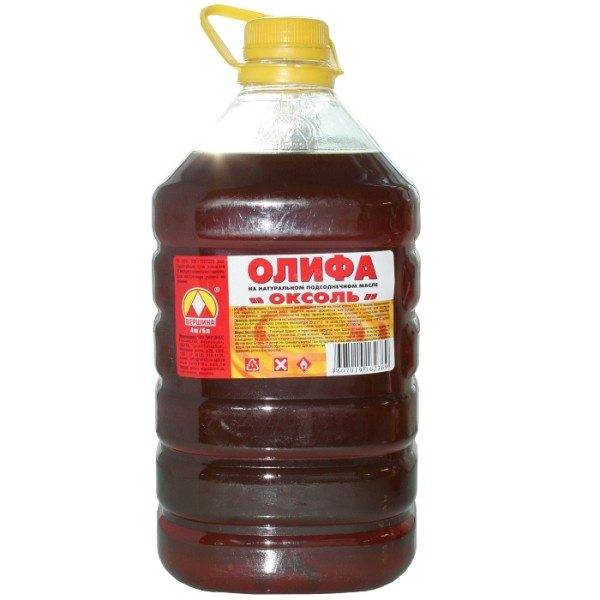
Output
Repairing wooden stairs is quite possible and does not present any particular problems, even if you do not have a lot of experience in joinery. In the video presented in this article, you will find additional information on this topic.
Good luck in the repair!



